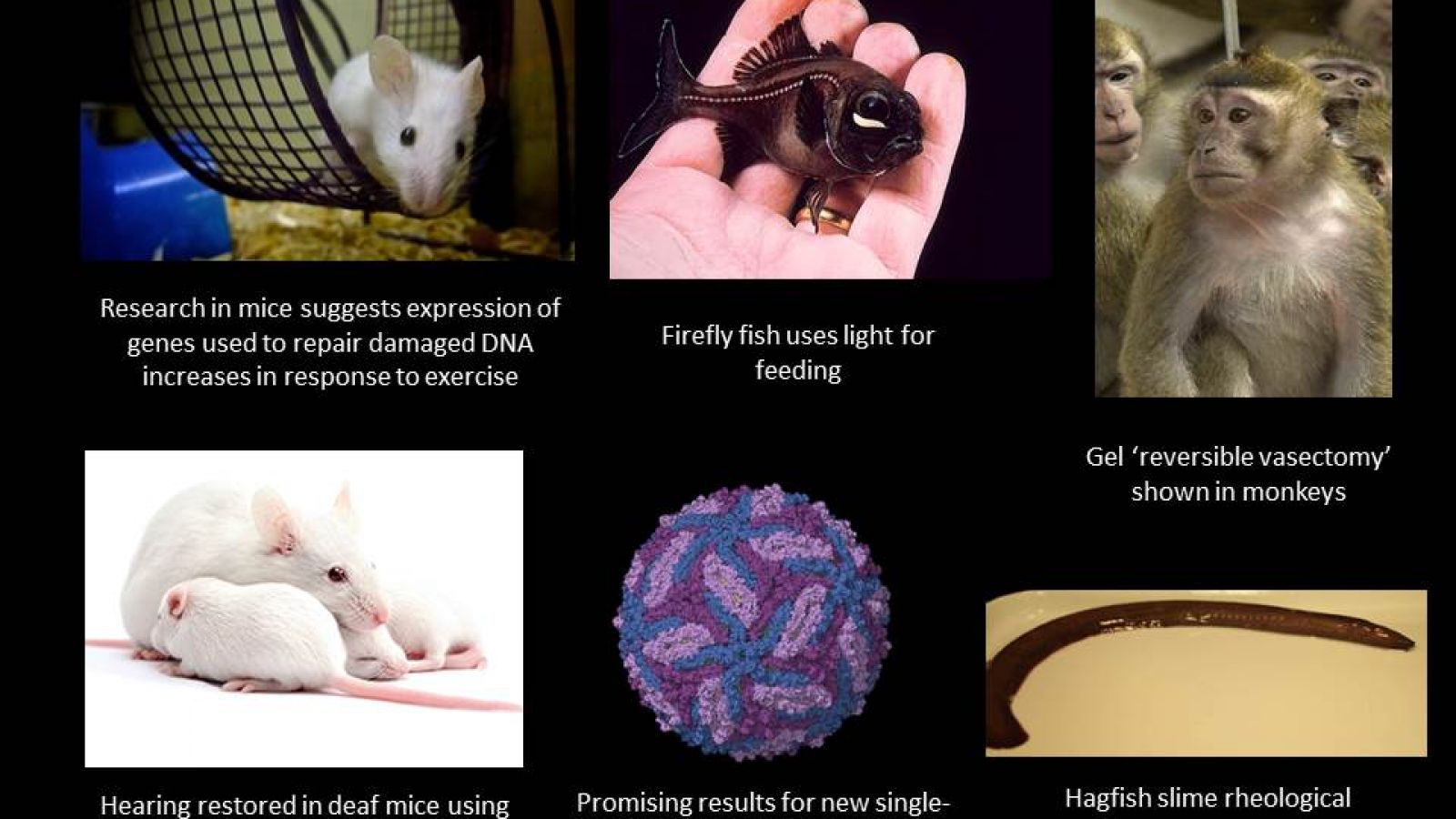 Contraceptive gel that creates ‘reversible vasectomy’ shown to be effective in monkeys
Contraceptive gel that creates ‘reversible vasectomy’ shown to be effective in monkeys
Vasalgel, an injectable contraceptive gel for men, has so far prevented 100% of conceptions during animal trials. The most recent trial which involved 16 rhesus monkeys illustrated that the injection was safe and had fewer complications than those usually associated with a vasectomy. Vasalgel is injected into the vas deferens and is reversible. Clinical trials in human volunteers are expected to begin next year.
http://www.independent.co.uk/life-style/health-and-families/health-news/contraceptive-gel-vasalgel-reverse-vasectomy-effective-monkey-trials-men-snip-reversible-a7566856.html
Promising results for new single-dose Zika vaccine
A single-dose vaccine for Zika virus has shown to give mice and monkeys immunity against the disease. Zika remains a threat, with cases reported in 70 countries - it is of particular danger to those who are pregnant as it can cause deformities in babies. There are a number of vaccines in the pipeline, but this is the first that requires only one dose to be administered.
https://www.newscientist.com/article/2120160-powerful-zika-vaccine-protects-mice-and-monkeys-from-the-virus/
Hearing restored in deaf mice using new gene therapy technique
Scientists have restored hearing in deaf mice using a new gene therapy technique. The mice suffered with a condition similar to hereditary human deafness, raising hopes the technique could lead to treatments for diseases of the inner ear which affect an estimated 125 million people worldwide.
Antibiotics remove gut bacteria that stimulate lung immune system at birth
Antibiotics given just before birth, given to women before undergoing a Caesarean section for example, might kill gut bacteria that initiate normal immune cell development in newborn lungs.
A study led by Hitesh Deshmukh, at the Cincinnati Children’s Hospital Medical Centre, Ohio, suggests that antibiotics can harm infant mice by killing important gut bacteria.
The team identified chemicals released by bacteria that tell a new pair of lungs when to build immune cells, how many to make, and when to use them. Temporarily disrupting gut bacteria was enough to make young mice more likely to contract pneumonia and die.
Journal reference: Science Translational Medicine, DOI: 10.1126/scitranslmed.aaf9412
https://www.newscientist.com/article/2120761-antibiotics-might-kill-gut-bacteria-that-protect-newborn-lungs/
http://www.mirror.co.uk/science/cure-deafness-discovered-scientists-after-9768342
Research in mice helps us understand how the brain reorders memories while we sleep
A recent study in mice suggests that sleep helps us forget certain memories so others can be stored for later use. After receiving a mild electric shock one group of mice were given a drug to prevent the brain from re-ordering its memories, while the second group were allowed to have a normal night's sleep. The following day the mice that had been given a drug displayed signs to suggest they remembered the shock, while the group that slept normally did not. This may have happened because the drug interfered with a process known as “scaling down”, which is thought to be key to forgetting some memories and filing others away.
http://www.independent.co.uk/news/science/sleep-forgetting-memories-keeping-others-discover-scientists-johns-hopkins-wisconsin-a7561021.html
Research in mice suggests that expression of genes used to repair damaged DNA increases in response to exercise
A recent study in mice found that expression of genes used to repair damaged DNA increases in response to endurance exercise. These findings are important for understanding how exercise provides a protective effect on the heart and future research may lead to increased life expectancy and drug-free cures for chronic heart problems.
http://www.physoc.org/press-release/2017/endurance-training-may-have-protective-effect-heart
Hagfish slime properties might plug pipes
Hagfish are marine fish shaped like eels, famous for releasing large quantities of “slime” that unfolds, assembles and expands into the surrounding water in response to a threat [MN1] or a predator’s attack. This defence mechanism even works against sharks by effectively clogging their gills or choking them.
The hagfish’s successful use of its defence gel is remarkable, particularly because the animal exerts no direct control over the concentration of the slime it exudes into the seawater.
The authors wonder whether polymers based on hagfish slime could be used to plug slow leaks in oil-pipes for example.
https://www.rheology.org/SoR172/ViewPaper?ID=189
Firefly fish
The flashlight fish Anomalops katoptron, which inhabits the coral reefs of the Pacific, uses flashing signals to forage for food at night. The moment it finds food, the flashing signal changes to a permanent glow while the fish is feeding.
http://journals.plos.org/plosone/article?id=10.1371/journal.pone.0170489
Last edited: 27 October 2022 18:43



